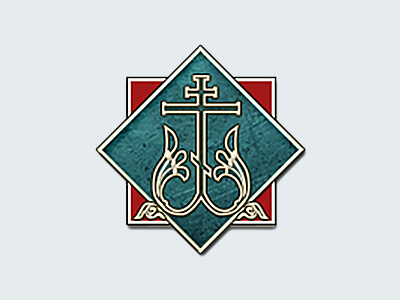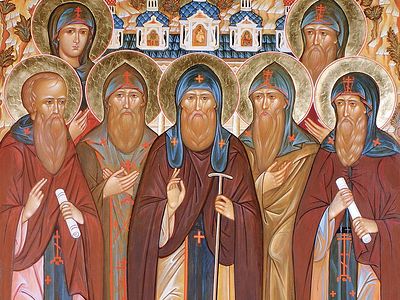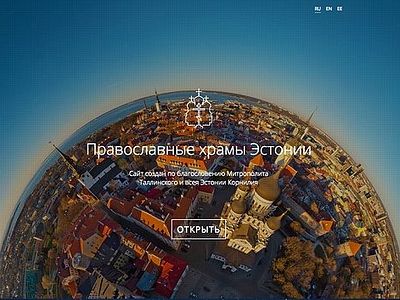Source: National Geographics
November 11, 2016
 In Obinitsa, Estonia, a young Seto girl named Liisi Lõiv wears a traditional costume in her grandparents' garden. Seto women typically have both an old costume and a new one. This is an older one—white, with long, rolled sleeves. The clothing reveals other details too. A married woman must cover her hair, while an unmarried young woman or girl like Liisi will wear only a garland or a headscarf, leaving her long braid visible. Today Setos wear their traditional clothes only on special occasions. Liisi says she embroidered this costume herself. "I'm proud of being Seto,” she says. “It is where I come from, where I grew up."
In Obinitsa, Estonia, a young Seto girl named Liisi Lõiv wears a traditional costume in her grandparents' garden. Seto women typically have both an old costume and a new one. This is an older one—white, with long, rolled sleeves. The clothing reveals other details too. A married woman must cover her hair, while an unmarried young woman or girl like Liisi will wear only a garland or a headscarf, leaving her long braid visible. Today Setos wear their traditional clothes only on special occasions. Liisi says she embroidered this costume herself. "I'm proud of being Seto,” she says. “It is where I come from, where I grew up."
On two sides of a disputed border lies a kingdom. It is young in age and ancient in beliefs, forged from the chaos of the Soviet Union’s collapse.
The people of this kingdom are the Setos, an indigenous ethnic minority of just a few thousand people from Setomaa, a small region nestled between southeastern Estonia and northwestern Russia.
 Peko—the Seto god of fertility and crops and, since the fall of the Soviet Union, king of the Setos—is said to be resting for eternity in the caves under the Holy Dormition Pskov-Caves Monastery in Pechory, Russian. Belief holds that he will wake up only if a great danger threatens the Setos. This Russian Orthodox monastery lies on what is now the Russian side of Setomaa, but between the two World Wars it was part of Estonia. Two thirds of Seto land falls in the Pskov region of Russia, though only a few hundred Setos live there.
Peko—the Seto god of fertility and crops and, since the fall of the Soviet Union, king of the Setos—is said to be resting for eternity in the caves under the Holy Dormition Pskov-Caves Monastery in Pechory, Russian. Belief holds that he will wake up only if a great danger threatens the Setos. This Russian Orthodox monastery lies on what is now the Russian side of Setomaa, but between the two World Wars it was part of Estonia. Two thirds of Seto land falls in the Pskov region of Russia, though only a few hundred Setos live there.
The Setos have fiercely maintained their traditions for centuries. Those include their ancient polyphonic singing, recently recognized on UNESCO's Intangible Cultural Heritage list.
But they’ve also created entirely new traditions, complete with their own royalty, to stave off modern threats to their cultural identity.
The greatest threat today is a border between Russia and Estonia—traditionally more of a suggestion than a demarcation—that divides the Setos. The border shifted multiple times over the 20th century—a span that saw two world wars, the rise and fall of the Soviet Union, and the early stirrings of a European Union.
But by the mid-1990s, Estonia was relishing its post-Soviet independence. And the border—though still not ratified to this day—was becoming an enforced one, dividing Setomaa’s Russian and Estonian sides. Yet it was also dividing the Setos from one another, cleaving their crop fields, churches, and cemeteries.
 Left: Father Jevgeni, an 85-year-old priest of the "half-believers," has been officiating at the Petseri Varvara Church—now on the Russian side of the border—for the past 40 years. But he’s been a priest for much longer. "It will be 70 years now that I officiate,” he says. “I started 40 years ago in Varvara Church because I was the only one who could do it in Estonian. Back then half of the church was Seto, and the choir sang in Estonian—the prayers were said in Estonian. But nowadays there is no point to officiate in Estonian anymore." Few Estonian speaking Setos are now found on the Russian side of the border. Right: An icon is carried around the Pechory Monastery on the day of the Dormition of the Mother of God. Both civilians and members of the Russian Army gather to help protect the icon as it’s viewed by the faithful—a group that includes Setos from both sides of the border as well as Russian Orthodox believers.
Left: Father Jevgeni, an 85-year-old priest of the "half-believers," has been officiating at the Petseri Varvara Church—now on the Russian side of the border—for the past 40 years. But he’s been a priest for much longer. "It will be 70 years now that I officiate,” he says. “I started 40 years ago in Varvara Church because I was the only one who could do it in Estonian. Back then half of the church was Seto, and the choir sang in Estonian—the prayers were said in Estonian. But nowadays there is no point to officiate in Estonian anymore." Few Estonian speaking Setos are now found on the Russian side of the border. Right: An icon is carried around the Pechory Monastery on the day of the Dormition of the Mother of God. Both civilians and members of the Russian Army gather to help protect the icon as it’s viewed by the faithful—a group that includes Setos from both sides of the border as well as Russian Orthodox believers.
“The border came, and it broke their daily life,” says Elena Nikiforova, a research fellow at the Center for Independent Social Research in St. Petersburg who conducted field work in Setomaa as the border was strengthened.
“The border became this trigger for them to start thinking of themselves as a separate people,” she says. “Being divided by the border, they became united.”
Unable to alter the course of foreign policy and torn between two countries, the Setos in 1994 declared for themselves a new, unified entity: the Kingdom of Setomaa.
Now, more than two decades later, they are keeping that kingdom alive.
 On the Day of the Dormition of the Mother of God, a religious holiday, the icon of Dormition—believed to work miracles—is carried from the Dormition Church and walked around the Petseri Monastery. Believers who follow the procession will be blessed by the priests. This Russian Orthodox religious celebration is also an important event for Setos, who follow both pagan and Orthodox belief systems (and are thus sometimes called "half-believers" by the Orthodox faithful). Many Setos come from Estonia to celebrate, crossing a border that was not enforced until after the collapse of the Soviet Union.
On the Day of the Dormition of the Mother of God, a religious holiday, the icon of Dormition—believed to work miracles—is carried from the Dormition Church and walked around the Petseri Monastery. Believers who follow the procession will be blessed by the priests. This Russian Orthodox religious celebration is also an important event for Setos, who follow both pagan and Orthodox belief systems (and are thus sometimes called "half-believers" by the Orthodox faithful). Many Setos come from Estonia to celebrate, crossing a border that was not enforced until after the collapse of the Soviet Union.
 Left: On the eve of a Russian Orthodox celebration known as the Dormition of the Mother of God, believers weave a carpet of flowers over an icon, which will be carried around the Pechory monastery the next day. This celebration, on the Russian side of the border in Pechory, is important to the Orthodox and Setos alike. Right: In the hills overlooking the Pechory monastery, on the Estonian side of the border, Aarne Leima, a former vice-king of the Seto kingdom, stands with a wooden representation of the Seto god Peko. A vice-king and queen, elected each year, are believed to communicate with Peko through their dreams, and must pass messages to the Setos. It's been more than two decades since the division of Setomaa by the Russian-Estonian border prompted the Setos to declare Setomaa their kingdom and Peko their king.
Left: On the eve of a Russian Orthodox celebration known as the Dormition of the Mother of God, believers weave a carpet of flowers over an icon, which will be carried around the Pechory monastery the next day. This celebration, on the Russian side of the border in Pechory, is important to the Orthodox and Setos alike. Right: In the hills overlooking the Pechory monastery, on the Estonian side of the border, Aarne Leima, a former vice-king of the Seto kingdom, stands with a wooden representation of the Seto god Peko. A vice-king and queen, elected each year, are believed to communicate with Peko through their dreams, and must pass messages to the Setos. It's been more than two decades since the division of Setomaa by the Russian-Estonian border prompted the Setos to declare Setomaa their kingdom and Peko their king.
 On a warm summer day, an artist paints the Russian Orthodox Pechory monastery, which Setos believe is the resting place of Peko.
On a warm summer day, an artist paints the Russian Orthodox Pechory monastery, which Setos believe is the resting place of Peko.
 Left: Marika Keerpalu, wearing a traditional costume at a small art gallery on the Estonian side of the border, welcomes a group of visitors from Mordovia, Russia. The visitors speak a language called Erzya that is similar to Seto. Wearing her hair fully covered signifies that Marika is married. Here, she sits below a painting of Hilana Taarka, a Seto woman from the turn of the 20th century famed for her rebellious singing. Right: This passport belongs to the late great-grandmother of a family of Seto origin on the Russian side of the border. It dates back to the time between the two World Wars, when Estonia declared itself the independent Republic of Estonia. The passport was issued on April 13, 1926. Today only about 200 Setos live in Russia, even though two-thirds of Setomaa land is on the Russian side of the border.
Left: Marika Keerpalu, wearing a traditional costume at a small art gallery on the Estonian side of the border, welcomes a group of visitors from Mordovia, Russia. The visitors speak a language called Erzya that is similar to Seto. Wearing her hair fully covered signifies that Marika is married. Here, she sits below a painting of Hilana Taarka, a Seto woman from the turn of the 20th century famed for her rebellious singing. Right: This passport belongs to the late great-grandmother of a family of Seto origin on the Russian side of the border. It dates back to the time between the two World Wars, when Estonia declared itself the independent Republic of Estonia. The passport was issued on April 13, 1926. Today only about 200 Setos live in Russia, even though two-thirds of Setomaa land is on the Russian side of the border.
![Jane Vako, a young violin player, lives and studies in the Värska, the biggest Seto village on the Estonian side of the border. She says she doesn’t want to be like the many other Seto youth who have left the region for cities and larger towns. “I’m finishing school this year,” she says, “and after [that] I want to see the world. It’s important. But I will come back. I don’t know how long it will take, but I’ll come back.” Jane explains that she needs to stay with her people, and that she could not live without the Seto forests. “I spend hours here, looking at the birds.”](http://www.pravoslavie.ru/sas/image/102515/251589.p.jpg?mtime=1479129917) Jane Vako, a young violin player, lives and studies in the Värska, the biggest Seto village on the Estonian side of the border. She says she doesn’t want to be like the many other Seto youth who have left the region for cities and larger towns. “I’m finishing school this year,” she says, “and after [that] I want to see the world. It’s important. But I will come back. I don’t know how long it will take, but I’ll come back.” Jane explains that she needs to stay with her people, and that she could not live without the Seto forests. “I spend hours here, looking at the birds.”
Jane Vako, a young violin player, lives and studies in the Värska, the biggest Seto village on the Estonian side of the border. She says she doesn’t want to be like the many other Seto youth who have left the region for cities and larger towns. “I’m finishing school this year,” she says, “and after [that] I want to see the world. It’s important. But I will come back. I don’t know how long it will take, but I’ll come back.” Jane explains that she needs to stay with her people, and that she could not live without the Seto forests. “I spend hours here, looking at the birds.”
 Left: Liisi Lõiv stands in her grandparents' garden in Obinitsa, Estonia, this time wearing her newer traditional costume, rich in color. Seto women always wear a set of silver jewelry when dressed in traditional costumes. The wealthier a woman's family, the more silver she might wear. The sounds of the metal have prompted at least one saying, says photographer Jérémie Jung: A woman should be heard before being seen. Right: A resident of Obinitsa's Soviet District—named for its communist architecture and being the location of a former collective farm—hangs laundry in the winter air.
Left: Liisi Lõiv stands in her grandparents' garden in Obinitsa, Estonia, this time wearing her newer traditional costume, rich in color. Seto women always wear a set of silver jewelry when dressed in traditional costumes. The wealthier a woman's family, the more silver she might wear. The sounds of the metal have prompted at least one saying, says photographer Jérémie Jung: A woman should be heard before being seen. Right: A resident of Obinitsa's Soviet District—named for its communist architecture and being the location of a former collective farm—hangs laundry in the winter air.
 Evar Riitsaar, a Seto artist and maker of traditional jewelry, rests at home in Obinitsa, on the Estonian side of the border, after a long day in the cold winter air. Riitsaar was vice-king of the Setos from 2003 to 2007. He now serves as chief editor of the Seto-language magazine Peko Helü and, along with his wife—the poet Kauksi Ülle—owns an art gallery.
Evar Riitsaar, a Seto artist and maker of traditional jewelry, rests at home in Obinitsa, on the Estonian side of the border, after a long day in the cold winter air. Riitsaar was vice-king of the Setos from 2003 to 2007. He now serves as chief editor of the Seto-language magazine Peko Helü and, along with his wife—the poet Kauksi Ülle—owns an art gallery.
 Left: Mourners gather as Father Viktor Merik officiates during the funeral of a friend of Evar Riitsaar's mother in Obinitsa. Right: Paasapäev, or Transfiguration Day, is a holy day for Setos and Russian Orthodox alike. After an Orthodox Mass in Obinitsa, Setos will gather in graveyards to share food with their deceased ancestors and loved ones, as if they were still there.
Left: Mourners gather as Father Viktor Merik officiates during the funeral of a friend of Evar Riitsaar's mother in Obinitsa. Right: Paasapäev, or Transfiguration Day, is a holy day for Setos and Russian Orthodox alike. After an Orthodox Mass in Obinitsa, Setos will gather in graveyards to share food with their deceased ancestors and loved ones, as if they were still there.
 Left: Mourners gather as Father Viktor Merik officiates during the funeral of a friend of Evar Riitsaar's mother in Obinitsa. Right: Paasapäev, or Transfiguration Day, is a holy day for Setos and Russian Orthodox alike. After an Orthodox Mass in Obinitsa, Setos will gather in graveyards to share food with their deceased ancestors and loved ones, as if they were still there.
Left: Mourners gather as Father Viktor Merik officiates during the funeral of a friend of Evar Riitsaar's mother in Obinitsa. Right: Paasapäev, or Transfiguration Day, is a holy day for Setos and Russian Orthodox alike. After an Orthodox Mass in Obinitsa, Setos will gather in graveyards to share food with their deceased ancestors and loved ones, as if they were still there.





